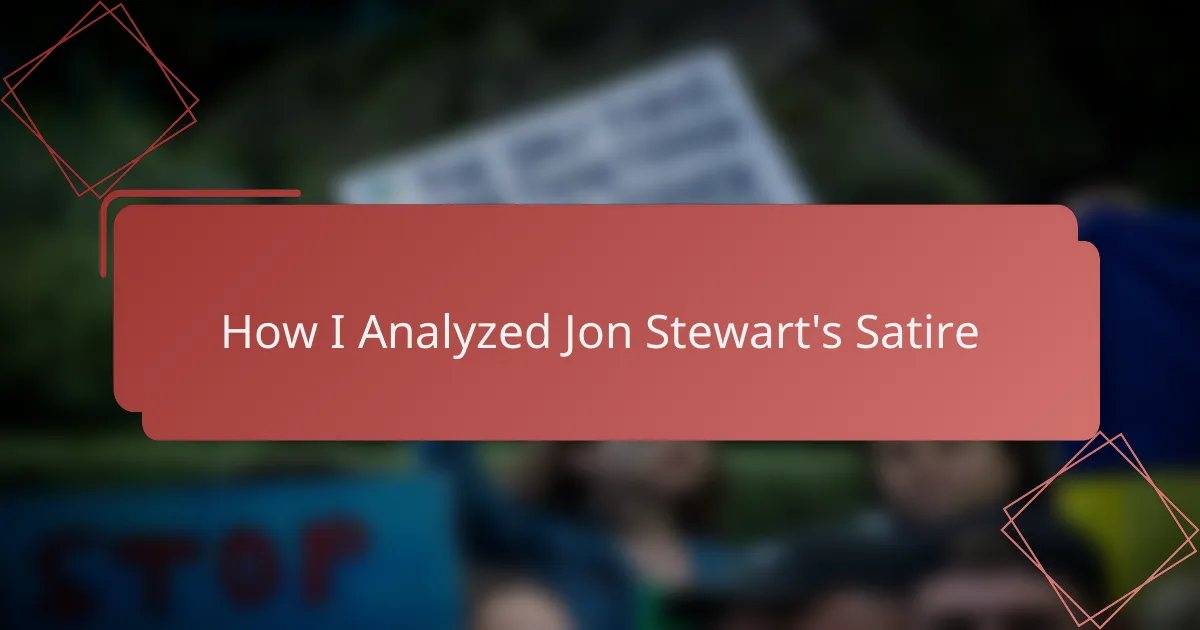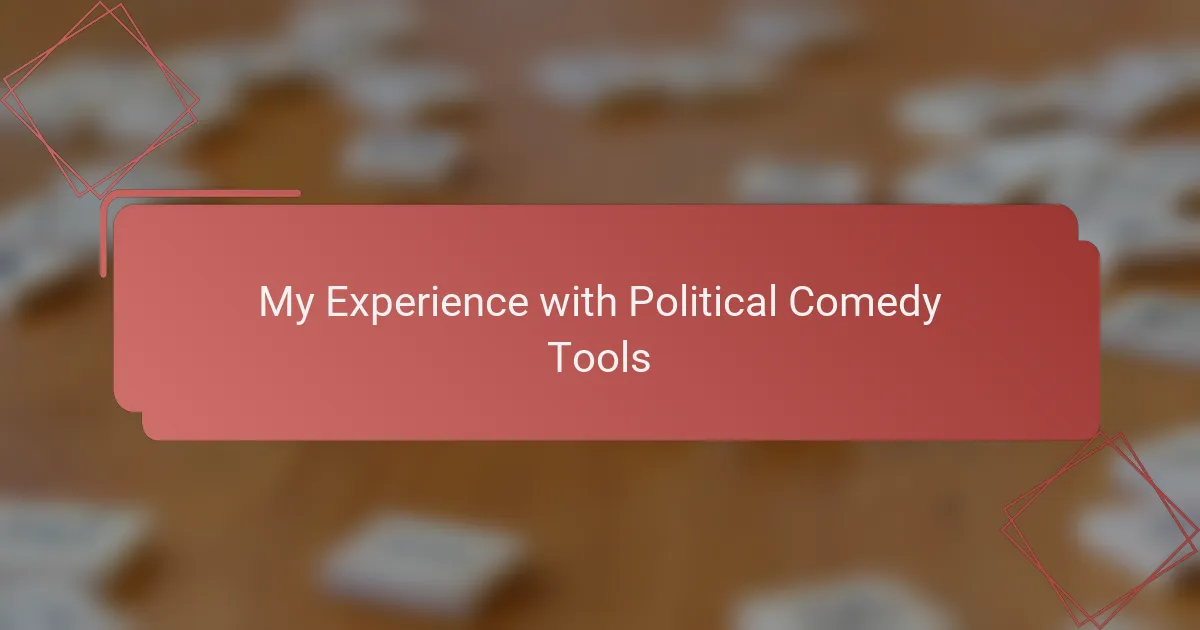Key takeaways
- Political satire, as demonstrated by Jon Stewart, blends humor with critical commentary, making complex issues more accessible and engaging.
- Key elements of effective satire include irony, tone, and exaggeration, which reveal deeper insights and provoke thought.
- Contextual awareness enhances satire analysis, turning humor into a powerful critique of societal truths.
- Analyzing satire involves recognizing its purpose as both entertainment and a tool for accountability in political discourse.
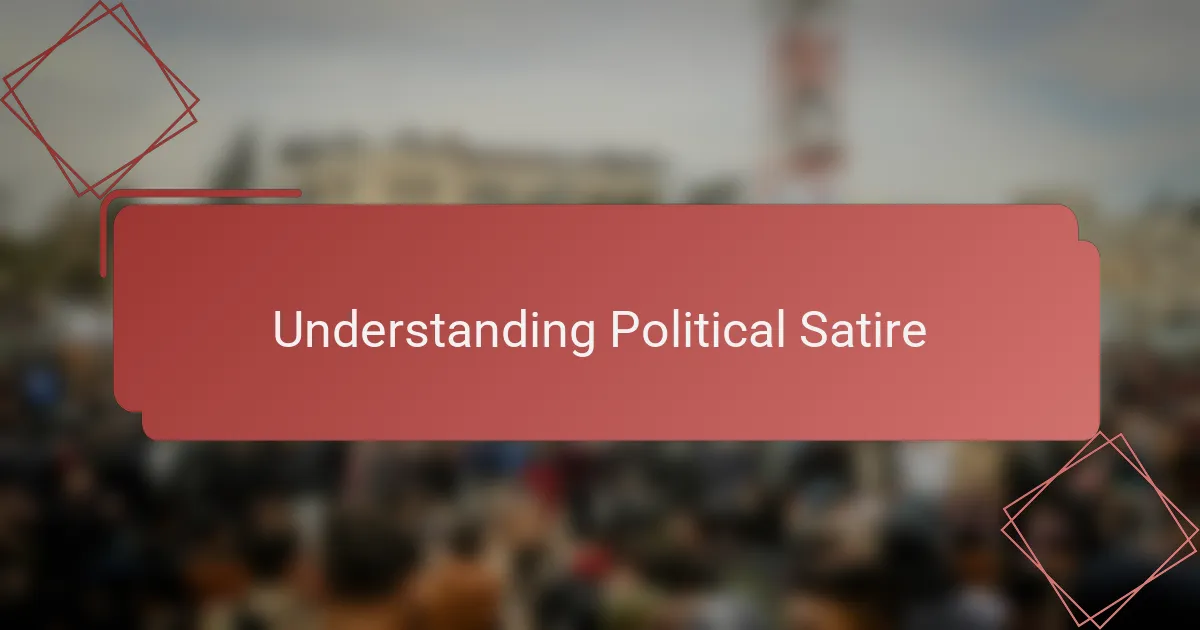
Understanding Political Satire
Understanding political satire is essential when diving into Jon Stewart’s work. Satire uses humor to expose and criticize political issues, and I found that Stewart’s sharp wit made complex topics accessible without losing their seriousness. Personally, his ability to blend comedy with real critique helped me see political events from a fresh, more insightful angle.
When I first analyzed his segments, I noticed how he balanced sarcasm with empathy, which isn’t easy. It made me realize satire isn’t just about making fun but about provoking thought and sometimes discomfort to spark awareness.
| Aspect | Political Satire |
|---|---|
| Purpose | To critique political issues humorously |
| Style | Uses irony, sarcasm, and exaggeration |
| Emotional Tone | Blends humor with underlying serious messages |
| Effect on Audience | Engages and provokes critical thinking |
| Example in Jon Stewart’s Work | Combining jokes with real news to highlight absurdities |
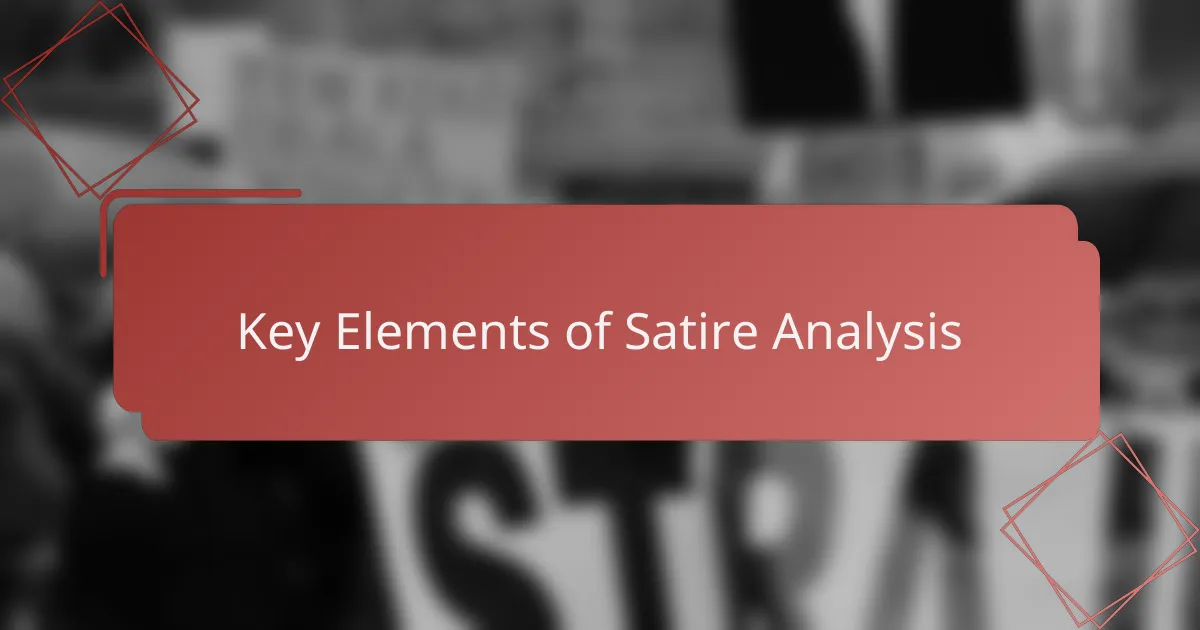
Key Elements of Satire Analysis
One of the first key elements I focused on was irony. It’s amazing how Stewart twists reality just enough to reveal the absurdity beneath political events. I kept asking myself, “Why does this contradiction stand out so starkly?” That question helped me appreciate the layered meanings behind his jokes.
Another element that struck me was tone. Satire walks a fine line between humor and seriousness, and Stewart’s tone often felt like a balancing act. I noticed how his empathetic delivery softened the blow of criticism, making the audience laugh while still feeling the weight of important issues.
Lastly, exaggeration played a crucial role. I found that Stewart didn’t just stretch facts for laughs; he magnified them to make a point impossible to ignore. This made me wonder, how often do we overlook problems until they’re presented in such an unmistakably outrageous way? That’s the power of good satire in action.
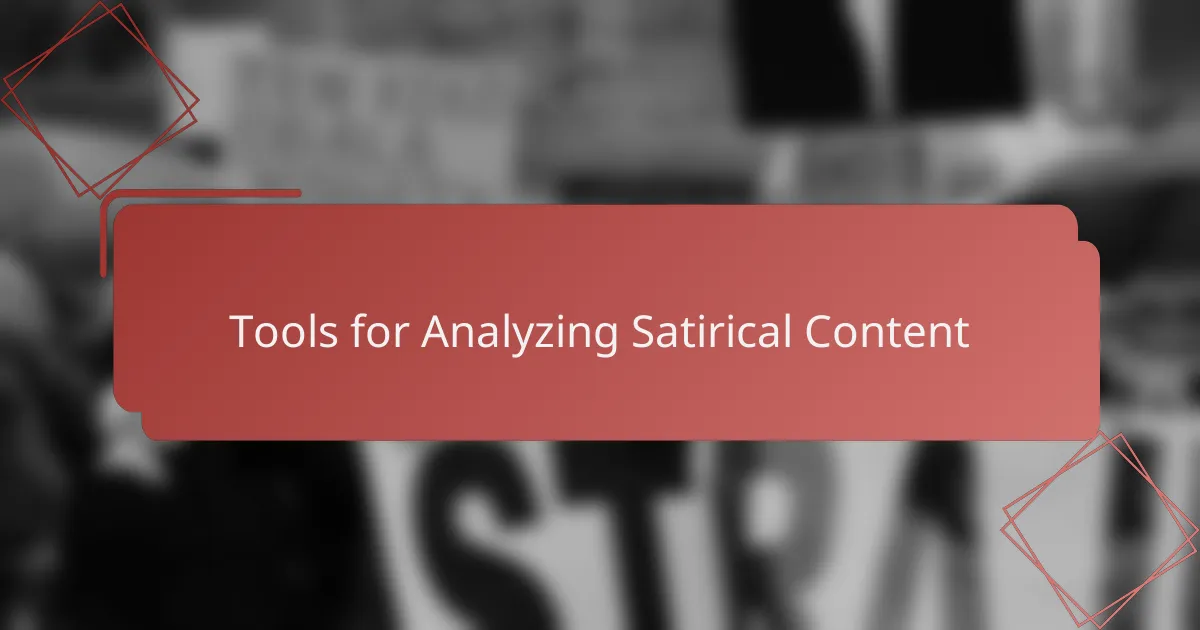
Tools for Analyzing Satirical Content
To really get to the heart of Jon Stewart’s satire, I used a mix of tools that helped me unpack both the humor and the critique. Textual analysis was my go-to method—it allowed me to break down his language, spot irony, and understand how his word choices revealed deeper political commentaries. I often found myself rereading segments just to catch the subtle sarcasm that isn’t obvious on the first watch.
Visual analysis was another powerful tool in my kit. Stewart’s shows rely heavily on visuals like [censured] expressions, pacing, and even staged props. Paying close attention to these nonverbal cues helped me see how satire goes beyond words to convey irony and criticism. For example, a smirk or exaggerated gesture could completely change the punchline’s impact, making me realize how much of satire’s meaning lies in presentation.
Sometimes I also used historical and cultural context as an analytical lens. By researching the political events and figures Stewart referenced, I could grasp the full weight of his satire. It made me ask myself, “What’s the background here that makes this joke both funny and sharp?” Diving into the context deepened my appreciation of how satire functions as a mirror reflecting society’s truths.
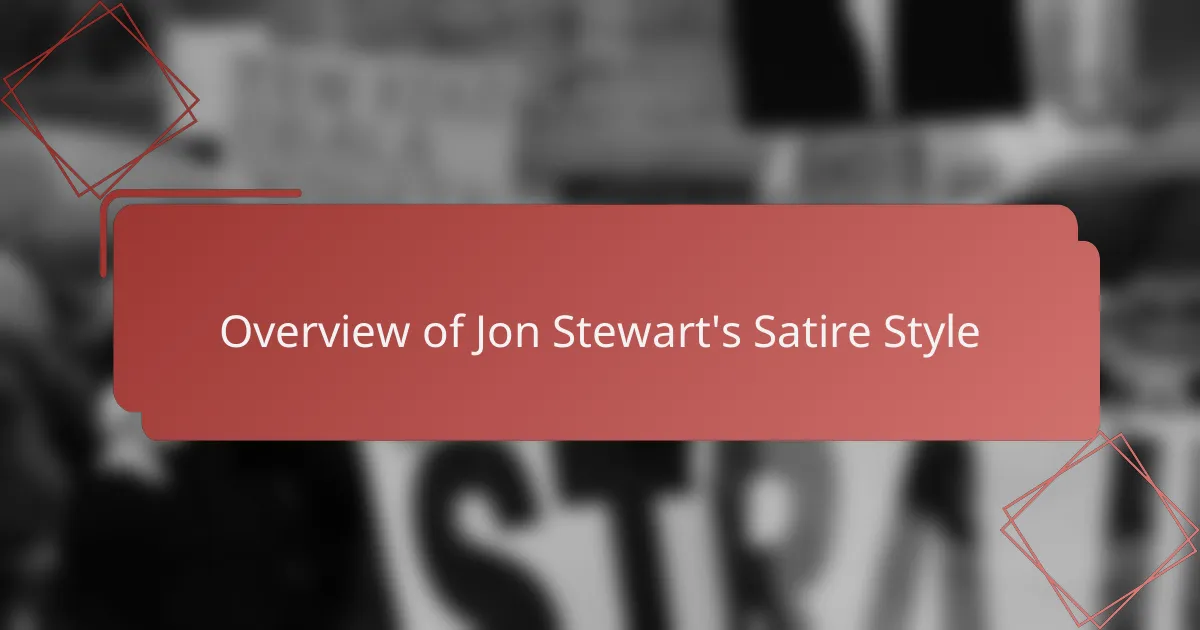
Overview of Jon Stewart’s Satire Style
Jon Stewart’s satire style struck me as uniquely sharp yet approachable. His way of blending humor with pointed political commentary made complex issues feel both accessible and urgent. I remember watching his segments and feeling that mix of amusement and a nudge to think deeper about the news.
What sets Stewart apart is his ability to use irony and sarcasm without alienating his audience. His humor often comes with a sense of frustration and longing for better leadership, which I found incredibly relatable and humanizing.
- Uses irony and sarcasm to highlight political contradictions
- Combines humor with genuine passion for truth and justice
- Engages viewers by simplifying complex political issues
- Expresses frustration with political absurdities through wit
- Creates a conversational tone that invites reflection rather than dismissal
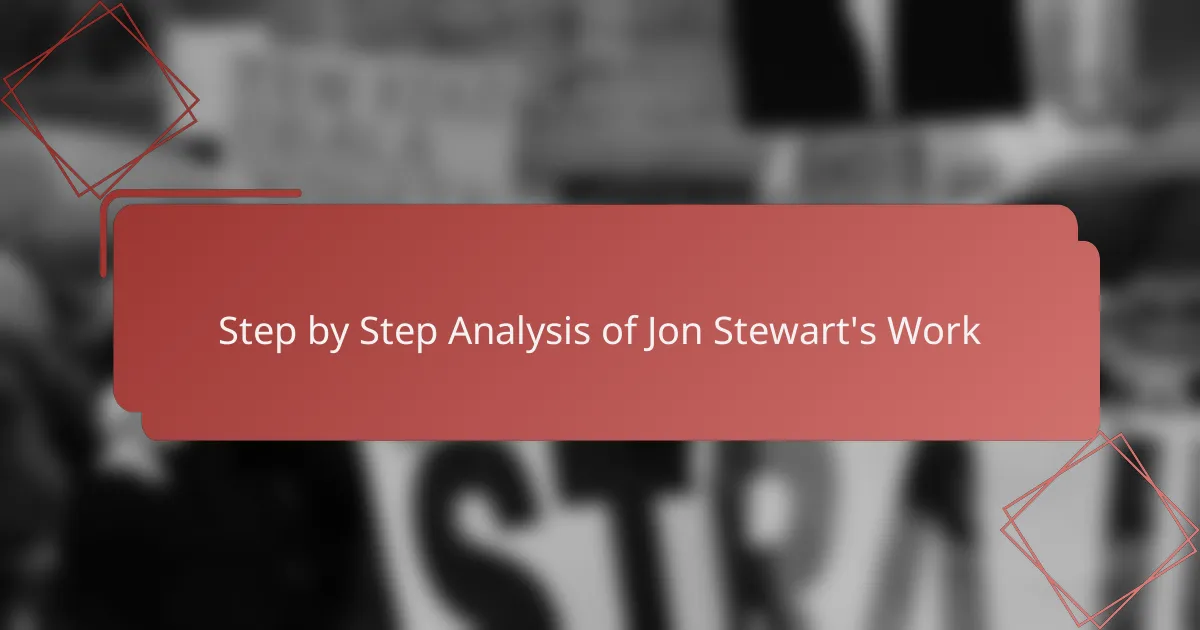
Step by Step Analysis of Jon Stewart’s Work
Step by Step Analysis of Jon Stewart’s Work
When I first dove into Jon Stewart’s satire, I noticed how masterfully he balanced humor with sharp political critique. His timing and delivery made complex topics feel both accessible and urgent. Breaking down each segment, I saw layers of irony and wit that invited me to think deeper while laughing—something I hadn’t experienced so vividly before.
What stood out most to me was Stewart’s use of contrast: setting absurd political statements next to factual realities, which highlighted the dissonance in a way that was both clever and powerful. This method made me reflect on how satire can serve as a tool for accountability, rather than just entertainment. Analyzing his work step by step compelled me to appreciate the craft behind every joke and punchline.
| Aspect | Analysis |
|---|---|
| Tone | Balanced humor and seriousness, engaging audiences emotionally and intellectually |
| Delivery Style | Conversational yet sharp, uses timing to emphasize points |
| Techniques | Irony, contrast between reality and absurdity, repetition for effect |
| Purpose | Inform, critique, and provoke thought beyond laughter |
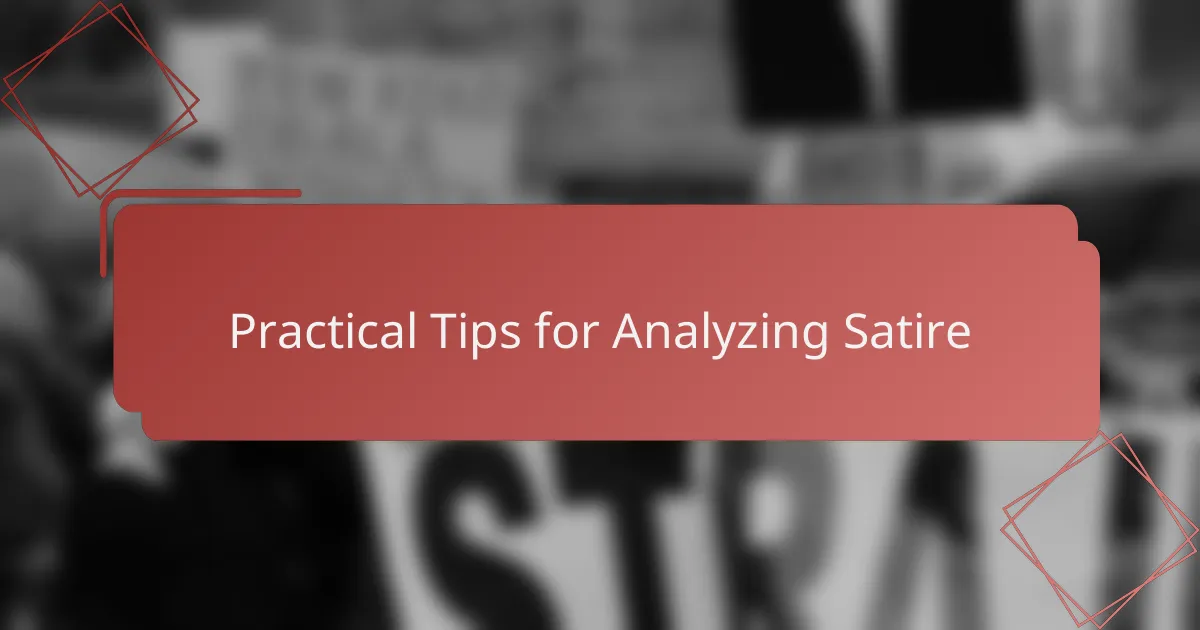
Practical Tips for Analyzing Satire
One practical tip I always rely on is to slow down and really listen—not just to the jokes but to what lies beneath them. When I first watched Stewart’s segments, I found myself pausing and asking, “What is he really trying to say here?” That question transforms satire from just entertainment into a lens for understanding political truths.
Another thing I discovered is to pay close attention to tone and delivery. Sometimes a sarcastic remark or a particular [censured] expression adds layers of meaning that words alone can’t convey. I’ve noticed that catching these subtle cues deepens my insight into the satire’s message and reveals the balance between humor and criticism.
Finally, context can’t be ignored. I remember struggling with some jokes until I researched the background of the events Stewart referenced. Knowing the political landscape turned those punchlines from confusing quips into sharp commentaries. So, I recommend always bringing a bit of historical and cultural awareness into your analysis—it’s like unlocking a secret code that makes satire truly resonate.
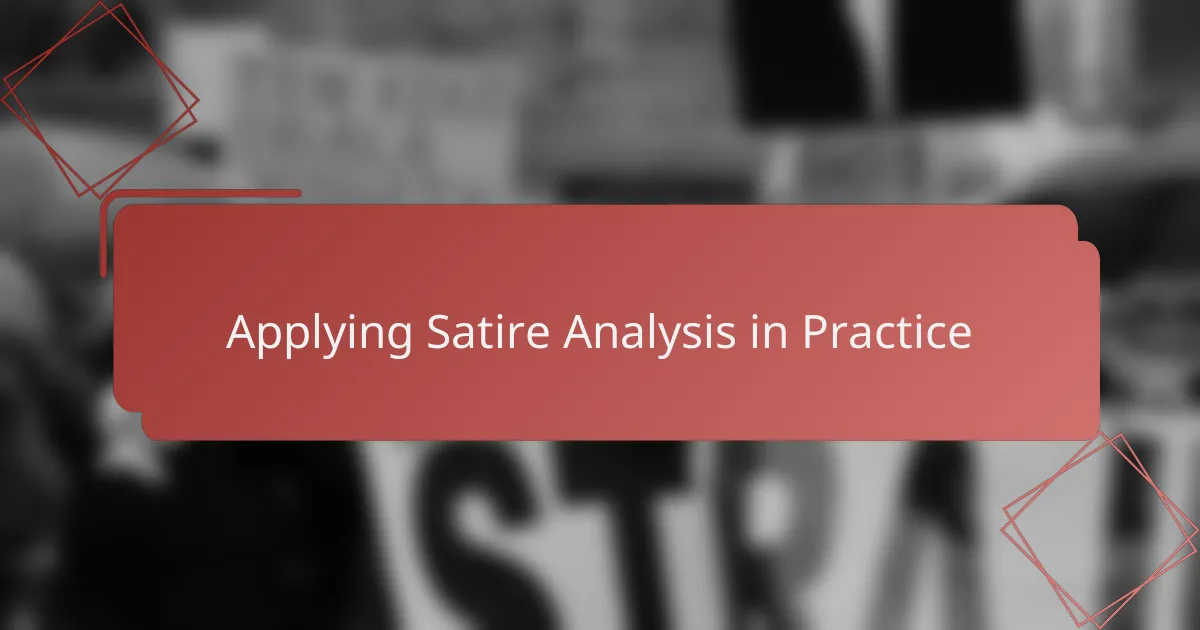
Applying Satire Analysis in Practice
Applying satire analysis in practice means digging beneath the humor to uncover the underlying critique. When I first examined Jon Stewart’s segments, I noticed how his wit wasn’t just for laughs—it was a clever tool to expose political hypocrisy. This approach helped me see satire as a bridge between entertainment and sharp social commentary.
One technique I relied on was identifying irony and exaggeration to highlight contradictions in political messaging. From my experience, breaking down these elements piece by piece deepens understanding and reveals the true power of satire.
- Identify the target of the satire and its real-world implications
- Analyze the use of irony, sarcasm, and exaggeration
- Consider the historical and political context surrounding the content
- Reflect on your emotional response to gauge the satire’s effectiveness
- Compare the satirical piece with actual political statements or events to uncover contrast
